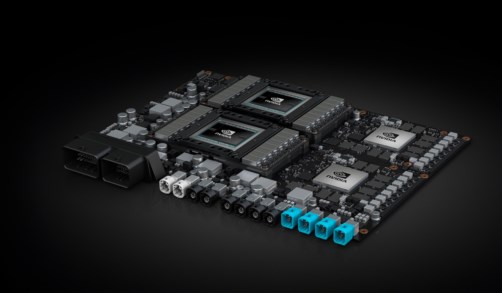
At the same time, NVIDIA also details its new DRIVE IX and DRIVE AR software platforms.
Built to bring AI to every aspect of the driving experience — and provide a technological path forward for the 320-plus companies and organizations working with us on autonomous vehicles — our first DRIVE Xavier autonomous machine processors are up and running.
The first samples of our Xavier processors, initially announced a little more than a year ago, are being delivered to customers this quarter.
Xavier will power the NVIDIA DRIVE software stack, now expanded to a trio of AI platforms covering every aspect of the experience inside next-generation automobiles.
With more than 9 billion transistors, Xavier is the most complex system on a chip ever created, representing the work of more than 2,000 NVIDIA engineers over a four-year period, and an investment of $2 billion in research and development.
It’s built around a custom 8-core CPU, a new 512-core Volta GPU, a new deep learning accelerator, new computer vision accelerators and new 8K HDR video processors. And with our unified architecture, all previous NVIDIA DRIVE software development carries over and runs.
While the technical details are complex, the story is simple: DRIVE Xavier puts more processing power to work using less energy, delivering 30 trillion operations per second while consuming just 30 watts. It’s 15 times more energy efficient than our previous generation architecture.
Trio of NVIDIA DRIVE AI Platforms
Xavier will bring an increasingly sophisticated suite of capabilities to next-generation vehicles. Complementing our original NVIDIA DRIVE AV autonomous vehicle platform, which uses neural networks to let cars drive themselves, we’ve unveiled at CES two new software platforms: DRIVE IX and DRIVE AR.
DRIVE IX, our intelligent experience software development kit, will enable AI assistants for both drivers and passengers, using sensors inside and outside the car.
DRIVE AR is our augmented reality SDK. We’re already getting a taste of what AR can do in mobile devices, and this software platform for the AI car will fuse computer vision, computer graphics and AI. DRIVE AR will enable next-generation augmented reality interfaces that deliver information points of interest along a drive, create alerts and navigate safely and easily.
All of this will scale up to tackle even the most demanding challenges.
Xavier is a key part of the NVIDIA DRIVE Pegasus AI computing platform. Delivering the performance of a trunk full of PCs in an auto-grade form factor the size of a license plate, it’s the world’s first AI car supercomputer designed for fully autonomous Level 5 robotaxis.
NVIDIA DRIVE Pegasus
With an unprecedented 320 TOPS of deep learning calculations and the ability to run numerous deep neural networks at the same time, Pegasus will provide everything needed for safe autonomous driving.
Pegasus is built on two Xavier SoCs and two next-generation NVIDIA GPUs. Customers will get the first samples of Pegasus with its 320 trillion operations per second of processing performance in mid-2018.
More than 25 companies are already using NVIDIA technology to develop fully autonomous robotaxis, and Pegasus will be their path to production.
